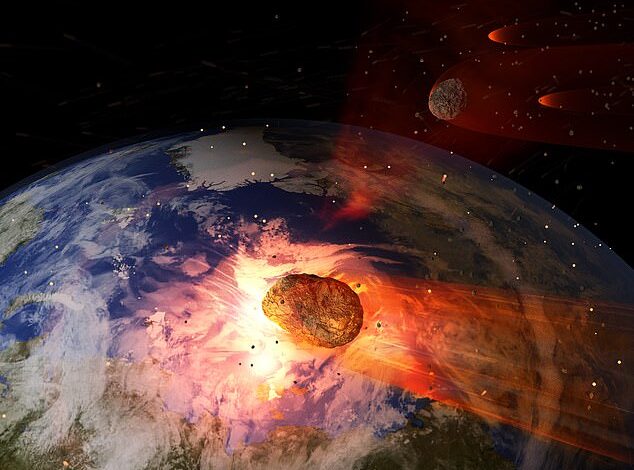Earth’s Geological Heartbeat: A 27.5-Million-Year Cycle Revealed Through the Ages

By Agnibeena Ghosh
In the vast expanse of 260 million years, Earth has witnessed the rise and fall of dinosaurs, the transformation of Pangea into the continents we know today, and the profound impact of human activities on our planet’s landscape. Amidst these monumental changes, researchers have uncovered an intriguing pattern—a slow, steady ‘heartbeat’ of geological activity occurring approximately every 27 million years.
This rhythmic pulse, identified through the study of ancient geological events, encompasses a range of cataclysmic occurrences such as volcanic activity, mass extinctions, plate reorganizations, and sea level rises. This 27.5-million-year cycle reflects a series of catastrophic ebbs and flows in the Earth’s geological history. Fortunately, scientists estimate that we have approximately 20 million years before the next anticipated ‘pulse’ of such events.
Contrary to the belief that geological events unfold randomly, this study provides statistical evidence supporting a common cycle, indicating a correlation among these geologic phenomena. Michael Rampino, a geologist at New York University and the lead author of the study, stated, “Many geologists believe that geological events are random over time, but our study provides statistical evidence for a common cycle, suggesting that these geologic events are correlated and not random.”
The research involved a meticulous analysis of the ages of 89 well-understood geological events spanning the last 260 million years. The resulting data, graphed below, reveals clusters of significant events occurring closely together over relatively short geological timespans, forming the identified ‘pulse.’ These events encompass marine and non-marine extinctions, ocean-anoxic events, continental flood-basalt eruptions, sea-level fluctuations, global pulses of intraplate magmatism, and plate reorganizations.
The findings suggest a broader correlation among global geologic events, occurring in pulses with an underlying cycle of approximately 27.5 million years. The idea of a cyclical nature in geological events has been explored by geologists for decades. In the 1920s and 30s, scientists proposed a 30-million-year cycle, while subsequent research in the 1980s and 90s presented a range of pulse lengths between 26.2 to 30.6 million years based on the best-dated geological events at the time.
Now, the pieces seem to fall into place with the current study pinpointing 27.5 million years as the anticipated cycle length. A previous study by the same authors in late 2020 even linked this cycle to the occurrence of mass extinctions, adding another layer of significance to the periodicity of these geological phenomena.
The implications of this research extend beyond the scientific realm, provoking contemplation about Earth’s natural rhythms and the potential impact of these cycles on life. As humans continue to influence the planet, understanding these long-term patterns becomes crucial for predicting and mitigating the consequences of future geological events.
While the 27.5-million-year cycle offers a fascinating glimpse into Earth’s geological heartbeat, the prospect of another pulse remains comfortably distant. The challenge for scientists is to delve deeper into the mechanisms driving these cycles, unraveling the mysteries of our planet’s geological timeline and gaining insights that could prove invaluable for future generations.






